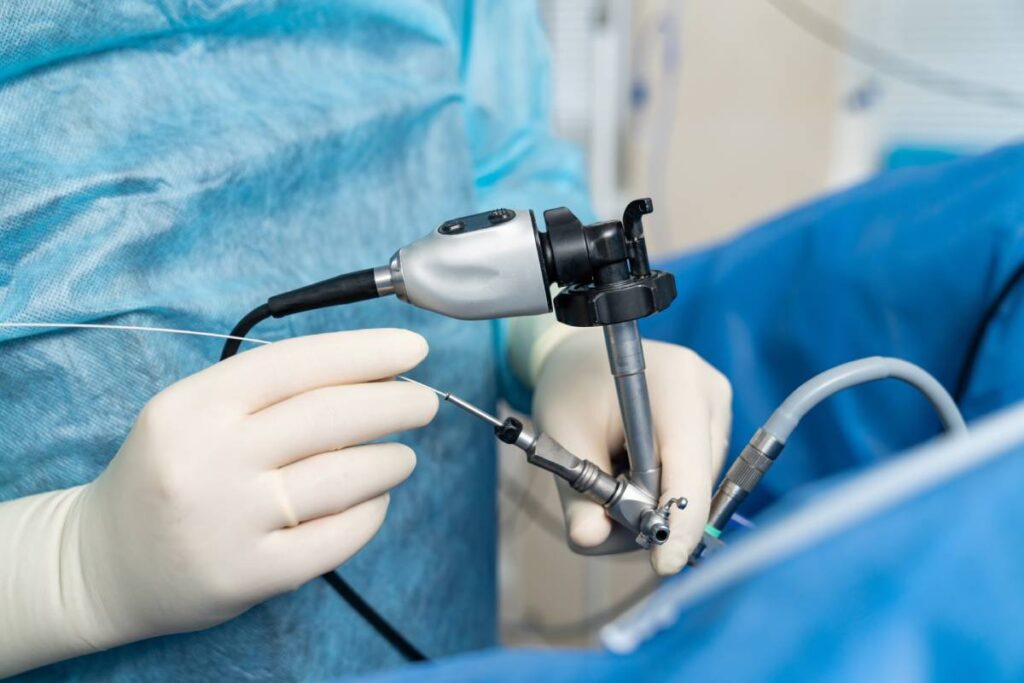Ablation is a minimally invasive surgical technique involving the removal or destruction of tissue for therapeutic purposes. It utilizes various forms of energy, including extreme heat, cold, lasers, or chemicals to precisely target problem areas. The technique is utilized across medical specialties, including oncology, cardiology, and radiology (1). There are several types of surgical ablation, each with different mechanisms and benefits.
Radiofrequency ablation (RFA) is one of the most widely used techniques, particularly in treating cardiac arrhythmias. It utilizes radiofrequency energy to generate heat, treating atrial fibrillation and other arrhythmias by targeting and burning the tissue responsible for abnormal heart rhythms (2). RFA has also proven useful in treating tumors in the liver, kidneys, lungs, and bones by destroying cancerous cells (3). One of RFA’s newest applications is the treatment of chronic pain by targeting the nerves sending pain signals to the brain (4).
Cryoablation uses extremely cold temperatures to freeze tissue, thereby destroying it. The procedure involves inserting a small, needle-like probe, formally called a cryoprobe, into the body. The cryoprobe circulates cold agents such as liquid nitrogen or compressed argon gas, enabling the probe to freeze and kill abnormal cells. Cryoablation is therefore a useful tool in treating various cancers such as skin, liver, kidney, bone, lung, prostate and breast (5). Research has shown that cryoablation is able to be performed more precisely than other ablation therapies, making it an appealing option that offers less complications, lower costs, and faster recovery times (6).
Similarly to radiofrequency ablation, microwave ablation (MWA) uses intense heat produced using microwave energy to destroy tissue by burning it. This method is typically used to treat tumors in the liver, lungs, and kidneys (7). Compared to RFA, research suggests that microwave ablation has the advantage of creating higher temperatures, making it a useful tool for more homogenous, larger ablations that can be performed much faster (8).
Laser ablation uses concentrated light energy to heat tissue and destroy it. Like other forms of ablation, laser ablation is useful in its ability to destroy cancerous cells. However, it has other, more widespread applications, such as the treatment of varicose veins (9) and epilepsy (10). Three different types of lasers, including CO2, Nd:YAG, and Argon lasers, are selected to be used during treatment depending on what kind of tissue is being targeted. Laser ablation is continuously becoming more precise, making it an ideal form of ablation for delicate procedures (11).
These different types of surgical ablation have enabled patients suffering from widespread ailments, including a multitude of cancers, arrhythmias, chronic pain, epilepsy, etc., to undergo minimally invasive yet effective treatment options. In addition to the methods mentioned above, there are other types of ablation, such as high-intensity focused ultrasound (HIFU), chemical ablation, and photodynamic therapy (PDT), that are used as non-invasive surgical alternatives. In harnessing various wavelengths, gases, and light energy, ablation is able to destroy unhealthy tissue without the need for traditional removal surgeries. With advances in technology and imaging, the future of ablation will likely see even broader applications across multiple specialties.
References
- Mayo Clinic. “Ablation Therapy,” September 10, 2024. https://www.mayoclinic.org/tests-procedures/ablation-therapy/about/pac-20385072
- Stanford Health Care. “Types of Catheter Ablation,” September 12, 2017. https://stanfordhealthcare.org/medical-treatments/c/catheter-ablation/types.html
- Penn Medicine. “Tumor Ablation,” n.d. https://www.pennmedicine.org/for-patients-and-visitors/find-a-program-or-service/interventional-radiology/tumor-ablation.
- Kenevan, Melissa. “Long-Lasting Pain Relief with Radiofrequency Ablation.” Mayo Clinic, May 23, 2023. https://www.mayoclinichealthsystem.org/hometown-health/speaking-of-health/radiofrequency-ablation-pain-relief.
- Cleveland Clinic Medical Professional. “Cryoablation.” Cleveland Clinic, May 1, 2024. https://my.clevelandclinic.org/health/treatments/16903-cryoablation.
- Kwak, Kijung, Bo Yu, Robert J. Lewandowski, and Dong-Hyun Kim. “Recent Progress in Cryoablation Cancer Therapy and Nanoparticles Mediated Cryoablation.” Theranostics 12, no. 5 (January 1, 2022): 2175–2204. https://doi.org/10.7150/thno.67530.
- Northwestern Medicine. “Microwave Ablation.” Northwestern Medicine, n.d. https://www.nm.org/conditions-and-care-areas/treatments/microwave-ablation.
- Kulkarni, Suyash S, Kunal B Gala, Nitin S Shetty, and Paresh Patel. “Microwave Ablation: How We Do It?” Indian Journal of Radiology and Imaging – New Series/Indian Journal of Radiology and Imaging/Indian Journal of Radiology & Imaging30, no. 2 (January 1, 2020): 206. https://doi.org/10.4103/ijri.ijri_240_19.
- Yao, Phil Y and Taif Mukhdomi. “Varicose Vein Treatment: Endovenous Laser Therapy.” StatPearls – NCBI Bookshelf, May 18, 2023. https://www.ncbi.nlm.nih.gov/books/NBK557719/.
- Cedars Sinai. “Laser Ablation Offers Hope for Tumor, Epilepsy Patients,” August 27, 2021. https://www.cedars-sinai.org/blog/tumor-laser-ablation-surgery.html.
- Azadgoli, Beina, and Regina Y Baker. “Laser Applications in Surgery.” Annals of Translational Medicine 4, no. 23 (December 1, 2016): 452. https://doi.org/10.21037/atm.2016.11.51.
